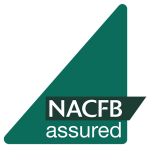A short guide to bridging finance
Despite the happenings of 2020 and continued challenges, bridging finance saw an increase in activity during the second half of 2020 and this continued in to 2021.
According to figures produced by MT Finance, Q2 2020 was hit badly, as the modern lending world dealt with the uncertainty of a global pandemic. Lenders reduced LTV’s and tightened criteria whilst others closed their doors. As a result, compared to 2019 the bridging market was down 37.9% overall.
However, Q4 lending was almost double that of Q2 and according to the Association of Short-Term lenders, it hit record levels of applications with some 25% up on the same period 2019.
If our own activity at Clever Lending is anything to go by, we are continuing the same trajectory in Q1 2021 despite lockdown 3.0, the appetite is clearly still there but what does this mean for brokers?
Don’t turn a blind eye to this opportunity and solution.
Some advisers have conducted business in this area before and in fact feel experienced. Others may have heard of bridging, looked into it, but not felt sure on how to proceed. We would urge you to read the information below and talk to us if you feel bridging would be a suitable solution, for your customers. Seeking new opportunities is key to not only surviving but thriving.
If you’re relatively new to the mortgage market or haven’t yet explored the options within bridging finance, you may not be fully aware of how it works or how it could help your clients.
This short guide will give you an overview of bridging finance, the benefits to you and your clients, that will drive additional income to your business and solutions for your customers, so they don’t seek them elsewhere!
Why
Firstly, you have to think why bridging finance should considered as a viable solution. A massive aspect of bridging finance is the flexibility it provides, this is key. Bridging allows borrowers to take advantage of opportunities that present themselves when time is critical, securing properties at the time they are available, perhaps when traditional mortgages lenders won’t lend. It can also help in emergency situations, such as chain breaks or in instances where speed is of the essence.
As the name suggests, they bridge the gap between needing funds to purchase and an exit plan, that being a traditional mortgage or sale. Typically, over a short term of 12 months.
What
What should you know If a client gets into a critical situation, say a property chain has broken down, but they still want to purchase their dream home or as an investment opportunity they want to buy, renovate and sell, you’ll need a product with flexibility to lend.
A traditional lender may not lend on a property which needs work and is not classed as habitable, that is where a bridging solution can help.
Currently, LTVs are a maximum of 75% (there is a BTL refurbishment deal up to 85%) and the customer will need a credible ‘exit’ for the finance, such as sale of property or a traditional mortgage (such as a remortgage or BTL as they want to rent the property out).
- Bridging finance is a short-term loan that can be used until term finance is secured, the next stage of financing becomes available or the sale of the subject property
- It can be speedy, flexible, and secure form of lending that offers your clients the finance they need and more importantly, when they need it
- For clients that are developing property, it can save them time by allowing them moving onto their next project prior to sale of current projects or securing term finance.
When
When your client needs finance to purchase, they may need it quickly, the answer lies in bridging finance. Whether a regulated transaction or unregulated, bridging finance could be invaluable to your client, helping them achieve opportunities to secure a home or fulfil investment opportunities.- Light, medium and/or heavy refurbishment, where investors renovating a property need to make it fit for purpose or mortgageable with a mainstream lender, or even to develop property to increase its potential value of yield, think HMO or similar
- Auction purchase, when a property is purchased at auction, an investor will need a quick solution so that they do not miss the opportunity and will need to complete within 28 days.
- When the sale and subsequent purchase are not continuous and may fall through. Known as chain breaking, your client may purchase the next property prior to the completion of the sale of the first property
How
We are experts in bridging finance. Whether it’s complex development transaction or a simple auction purchase, we have the answers you and your client needs. You don’t need to be the expert because we can be the expert for you
CASE STUDY
Background
The introducing brokers clients wanted to downsize to their ideal property to retire, but due to the market conditions they had delays selling their current property. They had found their dream home and didn’t want to miss out on it. As both clients were aged 68, they had found getting a traditional mortgage wasn’t possible due to affordability.
Solution
Matt at Clever Lending took on the advice for the introducing broker and obtained a regulated bridging solution, over the two properties. The lender accepted the client’s proposal, property security and exit plan that once the original property sold, it would clear the finance in full.
This also ensured the clients could complete the purchase before the end of the stamp duty holiday.
| New Mortgage | £278,000 | 0.48% | Regulated Bridge | 12 months |
Broker income £1,933


